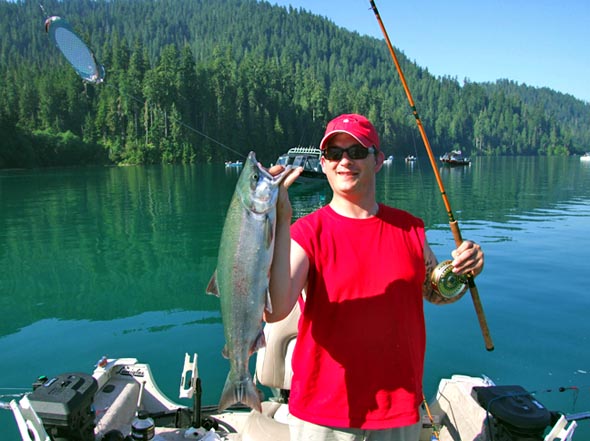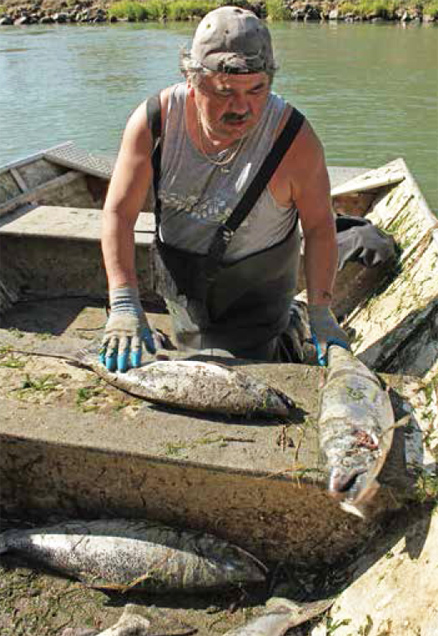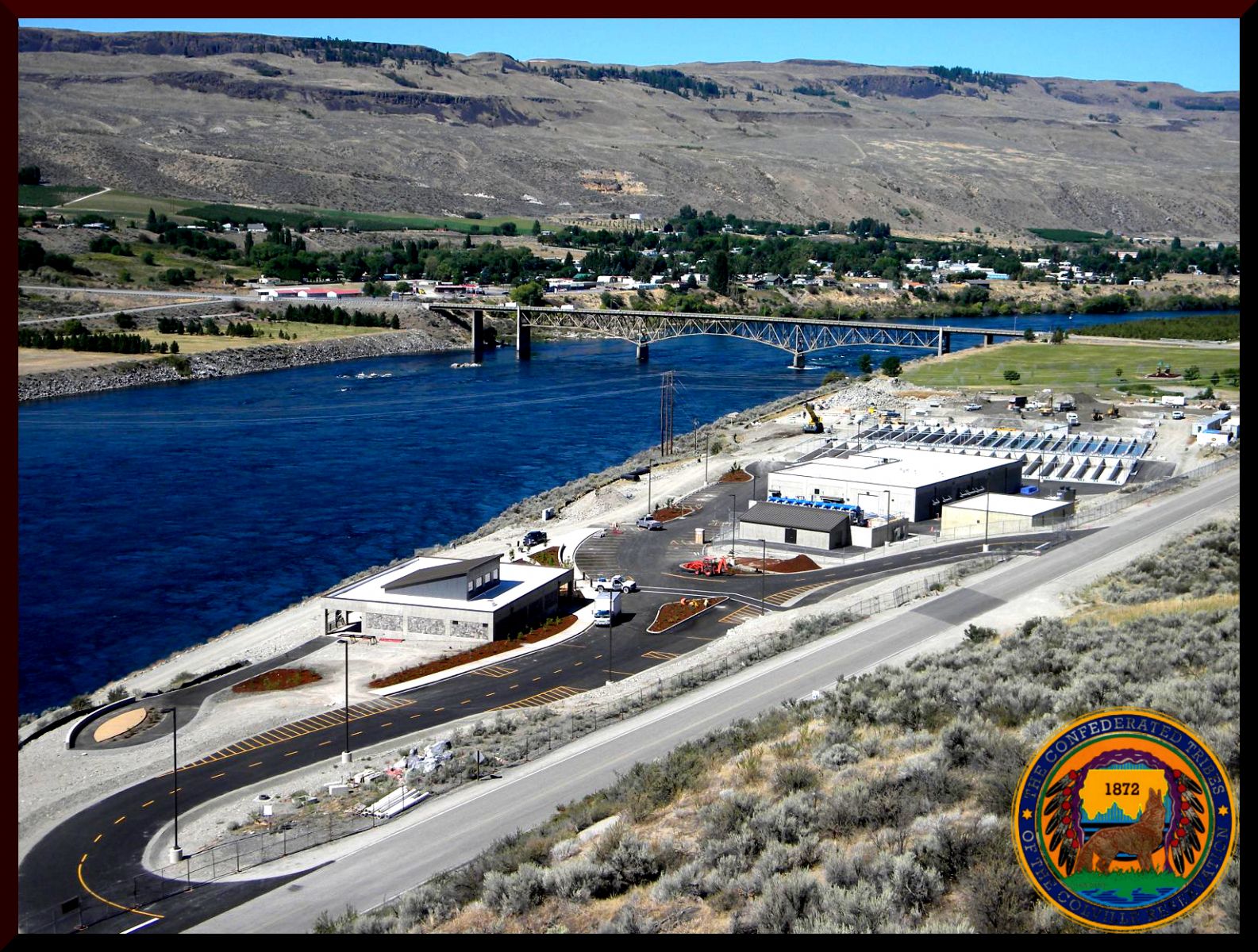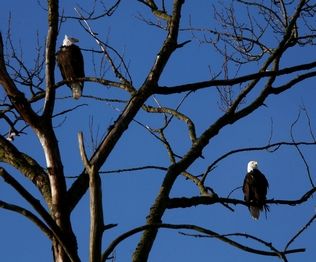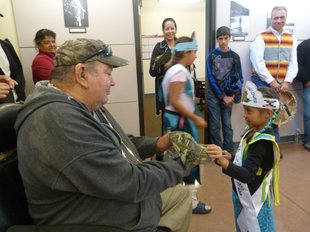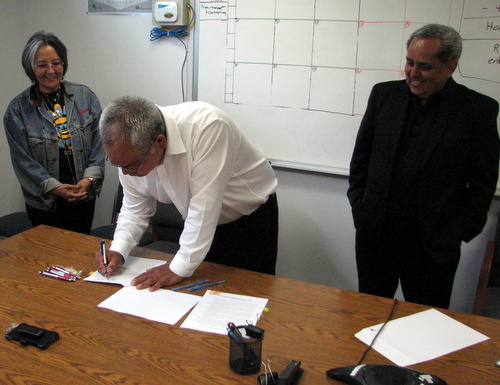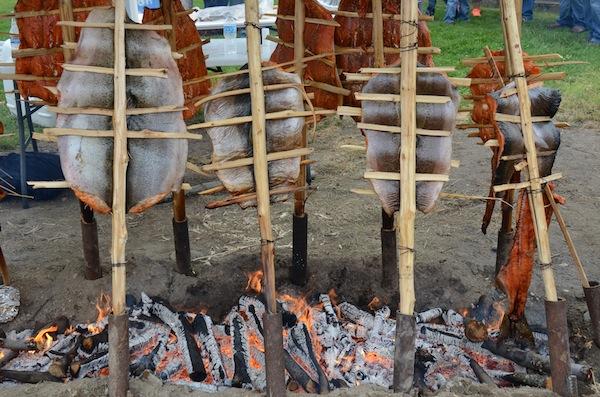
More than 100 sockeye salmon were smoked to serve at the official opening of the Chief Joseph Hatchery of the Colville Confederated Tribes, on June 20, 2013. Chinook is what the hatchery will breed.
ICTMN.COM July 22, 2013
The salmon once swam freely throughout the upper Columbia River, and plucking them from the waters represented an opportunity to benefit all the Colville Tribes by sharing the bounty.
“What a beautiful experience it was,” said Mel Taulou, an elder of the Colville Confederated Tribes, at a recent ceremony celebrating the first fish to be taken from the Chief Joseph Hatchery. He and others spoke of the sharing associated with fishing, of the exchange of fishing gear if someone was lacking something, and of sharing their catch with elders, friends and family.
“You gave freely. Everybody did. That’s the way it was,” said tribal member and longtime fisherman Lionel Orr, who sang in honor of the first fish as it was lifted from the river in the First Salmon ceremony. “That’s the way I was taught by the older fishermen.”
The salmon was then filleted, smoked, and later everyone present at the pre-opening ceremony was offered a taste of the first salmon.
About 800 people gathered near Chief Joseph Dam for the grand opening of the brand new Chief Joseph Hatchery on a rainy, overcast June 20. The water did not dampen their enthusiasm. Rather, since rain fills the rivers for salmon and is the lifeblood of the region, it was welcomed on this day in particular.
Although the day included a ribbon cutting and other opening celebrations, it was also an opportunity to honor the fishermen and their contributions to keeping this part of tribal custom alive and in passing their knowledge on to younger tribal members. The crowd gathered around tables under a huge tent to listen as representatives from tribal, state and federal agencies spoke about the history leading to this moment and what the hatchery would mean for the future.
The celebration concluded with tours of the hatchery, a full lunch featuring salmon, and the traditional ribbon cutting signifying the opening of the hatchery and completion of a promise made seven decades earlier.
The salmon’s freedom was first cut off by a series of dams that impeded their return to the spawning grounds. In the 1930s a number of dams throughout the Columbia basin were being planned, and tribes in the region were bracing themselves for the disastrous effect these constructs would have on fish runs and thus on tribal members’ lives. Four hatcheries were promised to help mitigate those effects on the Entiat, Wenatchee, Methow and Okanogan watersheds.
“Three of the four hatcheries were constructed between 1939 and 1942,” said Jim Brown, with the Washington Department of Fisheries and Game. Then came World War II. The hatchery plans were put on hold. Chief Joseph Hatchery, the fourth, had to wait. The wait is now over.
“Today’s event gives us the chance to celebrate the fulfillment of the 70-year old commitment,” Brown said at the opening. “Chief Joseph Hatchery is a tremendous accomplishment.”
The hatchery sits on 15 acres of U.S. Army Corps of Engineers property within the Colville Indian Reservation. It will be managed by the Colville Tribes under guidelines recommended by scientists as requested by Congress. It includes 40 raceways, each measuring 10 feet by 40 feet, plus three rearing ponds and three acclimation ponds, some onsite and some offsite.
“This is a modern hatchery built to the highest modern standards of science,” said Lorri Bodi of the Bonneville Power Administration (BPA). “It represents 30 years or more of progress in trying to meet the commitments by the federal government to tribes and the region. It represents a major step in our efforts to get fish back into the rivers of the Northwest.”
It was a collaborative effort involving the Colville Tribe, BPA, US Army Corps of Engineers, several Public Utility Districts and the NW Power & ‘Conservation Council. Funding came from the BPA and area public utility districts, Bodi said.
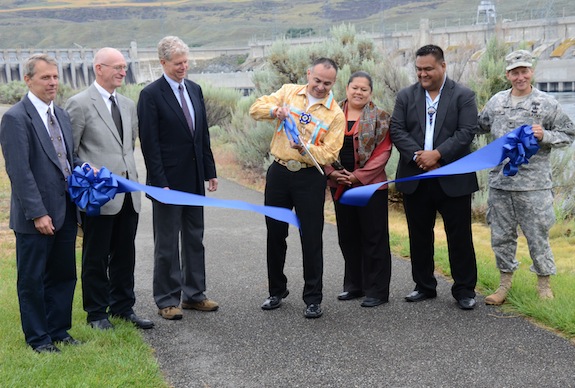
The $50 million hatchery will annually release up to 2.9 million chinook salmon.
“We’re going to see natural spawning of fall and summer chinook in the Okanogan River and we’re going to see spring chinook in the Okanogan basin for the first time in many, many years,” said Tom Karier from the Northwest Power & Conservation Council.
“It’s been a historic day,” said Tribal Chairman John Sirois, who was the day’s emcee. “It really touched my heart hearing stories from our elders about our history. We are salmon people. The salmon sacrifice for us in a sacred way. We also make that sacred commitment to them, to provide their water. I am so grateful, thankful and humbled by all the work that went into making this hatchery possible.”



